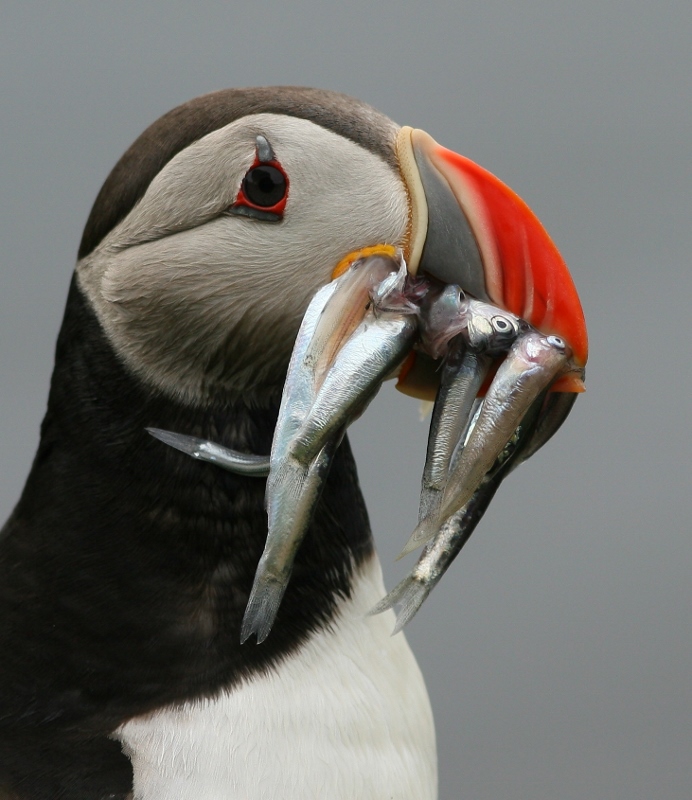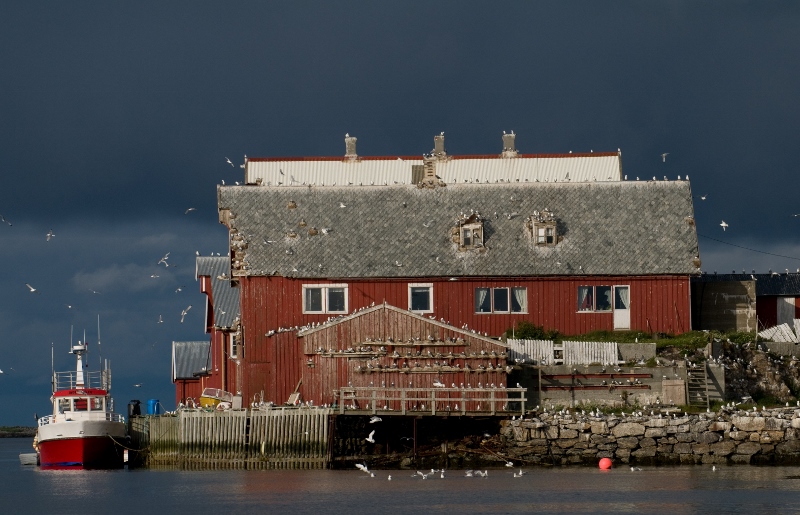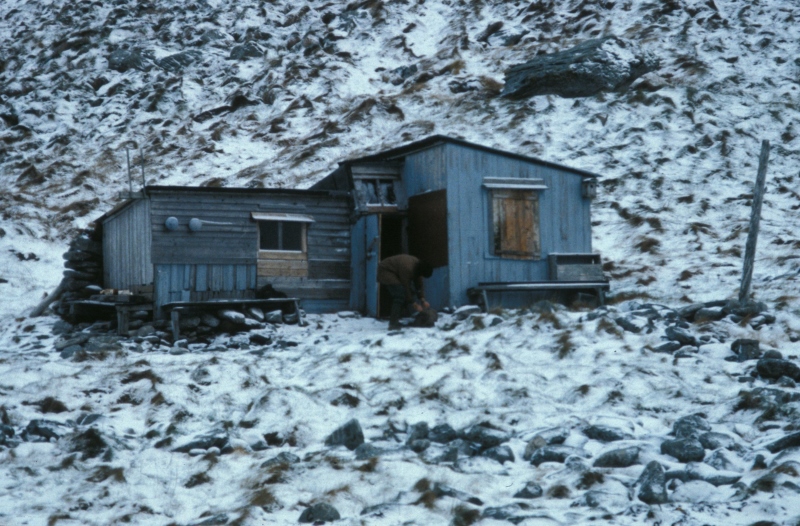Røst
With its large bird cliffs and unique location, Røst is a natural choice as a key site. Research on seabirds has been carried out here since the 1950s, and at Røst we find the longest monitoring series on seabirds in Norway. Contact person: Tycho Anker-Nilssen, NINA
Location and description
Røst municipality (67° 30’ N 12° 00’ E) is a small collection of islands, more than 100 km west of Bodø and the Norwegian mainland. With its extreme location, Røst is the southwesternmost part of Lofoten and Vestfjorden, Norway’s largest archipelago and fjord area. The distinctive topography at Røst offers everything from open landscape to steep bird cliffs and covers a land area of 10.4 km2. The largest of the islands is the flat Røstlandet in the northeast, where the residents of the municipality live (515 inhabitants in 2018). There we also find the airport and Røstlandet Nature Reserve (established in 1997) with rich wetland areas. To the southeast lies the Røstøyan conservation area where the high bird islands lie in a row; Vedøy, Storfjellet, Ellefsnyken, Trenyken and Hernyken, with Skomvær lighthouse as the outermost point. The Nykan Nature Reserve (established in 2002) includes Ellefsnyken, Trenyken and Hernyken. Røst is surrounded by open sea, and the archipelago lies on a shallow plateau with hundreds of islets and skerries. The tidal range is 2-3 meters, creating strong tidal currents and difficult waters for boat travellers.
Access
To access Røst you can either take the daily ferry from Bodø (via Moskenes) or flights from Bodø (via Leknes) with two daily departures in summer (once a day at weekends). The gas-fuelled ferry takes less than four hours on the direct route over Vestfjorden, and the plane 20-25 minutes. There are various accommodation options at Røst; “rorbu”, cabins, Fiskarheimen or Bryggehotellet. There are several restaurants, and a taxi operates the 17 km of roads on Røstlandet.
Wildlife
In addition to being in the centre of the world-famous Lofoten fishery of spawning cod in late winter, Røst is best known for its large population of breeding Atlantic puffins Fratercula arctica. At the end of the 1970s, Røst not only had Norway’s largest seabird colony, but also the world’s largest puffin colony with nearly 1.5 million breeding pairs. Unfortunately, the population has since declined dramatically as a result of food shortages and failed chick production. However, at Røst you can also find other breeding seabird species, including northern fulmar Fulmarus glacialis, storm petrel Hydrobates pelagicus, Leach’s storm petrel Oceanodroma leucorhoa, European shag Phalacrocorax aristotelis, common eider Somateria mollissima, black-legged kittiwake Rissa tridactyla, common guillemot Uria aalge, razorbill Alca torda and black guillemot Cepphus grylle. Even today these population are small compared to the puffin population, and many have declined.
There is no other site in Norway, north of the Polar Circle, where so many bird species have been registered as at Røst. The overall species list counts close to 300 species. Much of the reason for this lies in the extreme location and varied landscape. Seabirds come in close and the wetlands attract many wildfowl and waders. During autumn migration, Lofoten acts a funnel that runs out in Røst. Due to the overall lack of shrubs and trees, the small areas of vegetation in people’s gardens act as magnets for many passerines. There they are easy to spot and more and more amateur ornithologists visit Røst in September-October to look for rarities.
Human activity
Røst is first and foremost a fishing community, but during the seabird breeding season fishing activity is low. The tourists visiting Røst during the summer are primarily interested in close encounters with the birdlife, but the rich stocks of cod, saithe and halibut also attract many sport fishers. There are daily boat trips along the bird cliffs and, if the weather allows it, a tour round Skomvær lighthouse is offered.
Fieldwork
Research on seabirds at Røst started at the end of the 1950s, and it has been continued through a number of projects. This long period of research makes the knowledge of the seabird populations here much greater than from other places along the Norwegian coast. This applies especially to the puffin population, which has been the focus of the most comprehensive studies at Røst. Today the monitoring includes around 20 seabird species, of which 10 are key species in SEAPOP. The work is led by NINA and is based at the institute’s field station at Hernyken (67°26’ N 11°52’ E).
The first field station at Hernyken consisted of a 7 m2 primitive cabin with dirt floor. It was built in the 1930s from an old wooden boat, which had been pulled ashore and turned upside down. When Svein Myrberget from “Statens Viltundersøkelser” from Ås started his research on puffins at Hernyken in 1964, he built a 10 m2 annex. This cabin served as kitchen, bedroom, living room and working area for the field workers through 45 years. It was not until 2009 that it was replaced by a modern, fully insulated cabin. The institute also has a building on Vedøya at its disposal, a two-story log cabin that was moved there from Røstlandet at the end of the 1950s. It was used by the Swiss professor Beat Tschanz and his students that conducted behavioural research on seabirds through 25 years.This is how the field station looks after the renovation in 2009.Photo: Tycho Anker-Nilssen
Fieldwork usually starts with counts of the puffin population at Hernyken in the beginning of May. From early June, the field station is manned continuously for about two months until it closes in the beginning of August. For safety reasons, there are always two persons in the field and in the most demanding periods, there are usually 3-4 persons.




